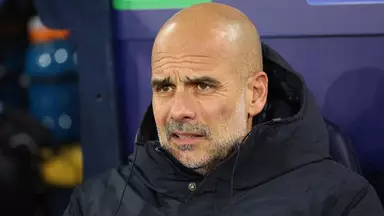Liverpool’s Bold Transfer Strategy: The Isak Gamble – A Deep Dive into the Reds’ £130m Pursuit

As the summer transfer window reaches its crescendo, Liverpool find themselves at the center of one of the most intriguing storylines in European football. The Merseyside giants, fresh off a transformative season under Arne Slot, are reportedly prepared to make seismic changes to their squad composition in pursuit of Newcastle United’s coveted striker, Alexander Isak. The proposed strategy involves the sale of three key players – Luis Diaz, Harvey Elliott, and Darwin Nunez – to fund what could be a record-breaking £130 million acquisition.
Arne Slot’s appointment as Liverpool manager has marked the beginning of a new chapter for the club. The Dutch tactician, known for his progressive football philosophy and tactical acumen developed during his successful tenure at Feyenoord, has wasted no time in stamping his authority on the squad. His vision extends far beyond mere squad rotation; it represents a fundamental shift in Liverpool’s approach to both playing style and player recruitment.
The early signs have been nothing short of spectacular. Liverpool’s summer transfer window has already been dubbed “sensational” by observers, with the club moving decisively to secure targets that align perfectly with Slot’s tactical blueprint. The manager’s commitment to “consolidating his first Premier League title” speaks to an ambition that goes beyond simply competing – it’s about establishing a dynasty that can rival Manchester City’s recent dominance.
Slot’s tactical preferences have become increasingly apparent through Liverpool’s pre-season preparations and early transfer activity. His system demands technical excellence, tactical intelligence, and physical prowess in equal measure. This philosophy has directly influenced the club’s transfer targets, with each potential signing carefully evaluated against these exacting standards.
The foundation for Liverpool’s ambitious Isak pursuit has been laid through an already impressive summer of recruitment. The crown jewel of their transfer activity to date has been the acquisition of Florian Wirtz from Bayer Leverkusen, a deal worth over £100 million that sent shockwaves through the European transfer market.
Wirtz, widely regarded as one of Germany’s most promising talents, represents exactly the kind of forward-thinking recruitment that has become synonymous with Liverpool under their current ownership structure. The attacking midfielder’s combination of creativity, goal threat, and tactical versatility makes him an ideal fit for Slot’s system, providing the kind of technical quality that can unlock even the most stubborn defensive setups.
The signing of Milos Kerkez from Bournemouth further demonstrates Liverpool’s strategic approach to squad building. The Hungarian left-back, despite his relatively modest transfer fee compared to Wirtz, represents tremendous value and potential. His pace, defensive solidity, and ability to contribute in the final third align perfectly with the modern full-back role that has become so crucial to Liverpool’s tactical identity.
Hugo Ekitike’s arrival from Eintracht Frankfurt adds another dimension to Liverpool’s attacking options. The French striker brings youth, pace, and a proven goal-scoring record from his time in the Bundesliga. His versatility allows him to operate across the front line, providing Slot with tactical flexibility that will prove invaluable across a long, demanding season.
These signings collectively demonstrate Liverpool’s commitment to competing at the highest level across all competitions. The investment in young, talented players with significant resale value also reflects sound financial planning, ensuring the club’s long-term sustainability while pursuing immediate success
Alexander Isak’s emergence as one of Europe’s most coveted strikers has been nothing short of remarkable. The Swedish international’s journey from Real Sociedad to Newcastle United has been marked by consistent improvement and increasingly impressive performances in the Premier League. His combination of technical ability, physical presence, and clinical finishing has made him a natural target for clubs seeking to elevate their attacking threat.
Liverpool’s interest in Isak stems from several factors that align with Slot’s tactical preferences. The striker’s ability to operate effectively both as a central focal point and in wider positions provides the kind of tactical flexibility that modern football demands. His movement in and around the penalty area, combined with his ability to link play and bring others into the game, makes him an ideal fit for Liverpool’s fluid attacking system.
Isak’s goal-scoring record speaks for itself, but it’s his all-around contribution that has caught the attention of Liverpool’s recruitment team. His pressing intensity, work rate, and willingness to contribute defensively align perfectly with the high-energy, high-pressing style that has become synonymous with successful Liverpool teams under recent managers.
The £130 million valuation placed on Isak by Newcastle reflects both his quality and the reluctance of the Magpies to lose such a crucial player. Newcastle’s own ambitions in the Premier League and European competitions make them determined to retain their star assets, driving up the price for any potential suitors.
From a tactical perspective, Isak’s arrival would provide Liverpool with a different dimension to their attacking play. While the club has relied heavily on the pace and movement of their current forward line, Isak offers a more traditional striker’s presence while maintaining the technical skills necessary to thrive in Slot’s system.
The financial reality of modern football means that even clubs of Liverpool’s stature must carefully balance their books when pursuing high-profile targets. The proposed sale of Luis Diaz, Harvey Elliott, and Darwin Nunez represents a calculated strategy to raise the funds necessary for Isak’s acquisition while maintaining squad competitiveness.
Luis Diaz’s potential departure has been the subject of intense speculation throughout the summer, with Bayern Munich reportedly having multiple offers rejected by Liverpool. The Colombian winger’s market value, estimated at £60-70 million, reflects his proven quality and the scarcity of top-class wingers in the current market.
Diaz’s time at Liverpool has been marked by moments of brilliance interspersed with periods of inconsistency. His raw pace, dribbling ability, and direct style of play have provided Liverpool with a different tactical option, particularly effective against teams that sit deep and defend in numbers. However, questions about his final product and tactical discipline have occasionally frustrated both managers and supporters.
The decision to potentially sell Diaz represents a significant gamble from Liverpool’s perspective. His departure would remove a player capable of changing games single-handedly, while also reducing the squad’s tactical flexibility. The left-wing position would become significantly lighter, with Cody Gakpo emerging as the primary option in that role.
Bayern Munich’s persistent interest in Diaz demonstrates his continued appeal to Europe’s elite clubs. The German giants’ willingness to invest heavily in his services suggests they view him as a key component of their own tactical setup, potentially providing him with the platform to reach his full potential.
Harvey Elliott represents everything positive about Liverpool’s academy system and player development philosophy. The young midfielder’s progression from promising teenager to first-team regular has been a joy to watch for Liverpool supporters, making his potential sale all the more emotionally challenging.
Elliott’s market value of approximately £40 million reflects both his current ability and his tremendous potential for future development. His technical skills, creativity, and tactical intelligence have made him a valuable squad player, capable of contributing effectively in multiple positions across the midfield and attacking lines.
The decision to potentially sell Elliott would be particularly significant given Liverpool’s traditional reluctance to part with homegrown talent. The financial benefits of such a sale would be substantial, with the entire fee representing pure profit from an accounting perspective due to his academy status.
However, Elliott’s departure would represent a loss of both talent and squad depth. His ability to provide cover across multiple positions has made him an invaluable asset for squad rotation, particularly during periods of fixture congestion. His understanding of Liverpool’s tactical systems and his connection with the supporters make him an ideal squad player for a club competing across multiple fronts.
Darwin Nunez’s potential sale represents perhaps the most complex aspect of Liverpool’s proposed strategy. The Uruguayan striker’s time at Anfield has been characterized by moments of genuine brilliance overshadowed by frustrating inconsistency and missed opportunities.
Nunez’s market value of approximately £50 million reflects the ongoing debate about his true quality and potential. His physical attributes, pace, and work rate are undeniable assets, but questions about his finishing, decision-making, and tactical awareness have persisted throughout his Liverpool career.
From a tactical perspective, Nunez’s potential departure would be offset by Isak’s arrival, representing an upgrade in terms of technical ability and tactical sophistication. However, the Uruguayan’s unique physical profile and his ability to stretch defenses with his pace would be lost, potentially reducing Liverpool’s tactical options in certain situations.
The financial aspect of Nunez’s potential sale is straightforward – £50 million would represent a reasonable return on Liverpool’s investment, particularly given the concerns about his consistency and development trajectory. However, the timing of such a sale, combined with the other proposed departures, raises questions about squad depth and competition for places.
Former Aston Villa striker Gabriel Agbonlahor’s comments on talkSPORT provided valuable insight into the financial mechanics of Liverpool’s proposed strategy. His analysis of the potential transfer fees – £60-70 million for Diaz, £40 million for Elliott, and £50 million for Nunez – demonstrates a clear understanding of current market values and the financial planning necessary for such ambitious moves.
Agbonlahor’s perspective as a former Premier League striker adds credibility to his assessment of player valuations. His experience in the modern transfer market, combined with his understanding of the financial pressures facing clubs, makes his analysis particularly relevant to Liverpool’s situation.
The total potential income from these three sales – approximately £150-160 million – would more than cover Isak’s £130 million price tag while providing additional funds for squad strengthening in other areas. This financial arithmetic forms the foundation of Liverpool’s strategic thinking, demonstrating the careful planning required for such significant squad restructuring.
Industry experts have generally supported Agbonlahor’s valuation assessments, with most agreeing that the proposed fees represent fair market value for the players involved. The current transfer market’s inflation, driven by increased television revenues and commercial income, has created an environment where such valuations are increasingly common.
While the financial logic of Liverpool’s proposed strategy is sound, the potential risks associated with reducing squad depth cannot be ignored. The modern football calendar’s demands, with domestic competitions, European campaigns, and international fixtures, require substantial squad resources to maintain competitiveness across all fronts.
Manchester City’s recent dominance provides a blueprint for successful squad management in the modern era. Pep Guardiola’s ability to rotate his squad without significant drop-offs in quality has been crucial to City’s sustained success across multiple competitions. Their approach demonstrates the importance of maintaining strength in depth while pursuing excellence in starting eleven quality.
Liverpool’s proposed strategy appears to prioritize quality over quantity, potentially leaving them vulnerable during periods of injury or suspension. The departure of three versatile players who can contribute across multiple positions would reduce Slot’s tactical options and increase the pressure on remaining squad members.
The fixture congestion expected in the upcoming season, with the expanded Champions League format and domestic cup competitions, makes squad depth particularly crucial. Liverpool’s commitment to competing on all fronts requires careful resource management to avoid burnout and maintain performance standards throughout the campaign.
Arne Slot’s tactical system places specific demands on players in terms of technical ability, tactical intelligence, and physical conditioning. The proposed changes to Liverpool’s squad would need to align with these requirements to maintain tactical coherence and competitive effectiveness.
Isak’s arrival would provide Liverpool with a focal point in attack who can operate effectively in Slot’s preferred system. His ability to drop deep and link play, combined with his clinical finishing in the penalty area, makes him an ideal fit for the Dutch manager’s tactical philosophy.
However, the loss of Diaz’s pace and directness on the wing could impact Liverpool’s ability to stretch opposition defenses and create space for other attackers. His replacement would need to provide similar tactical benefits while potentially offering improved consistency and end product.
Elliott’s potential departure would remove a player whose tactical versatility has made him valuable across multiple positions. His understanding of Slot’s system and his ability to provide cover in midfield and attacking roles would be difficult to replace, particularly given his homegrown status and wage structure benefits.
The overall tactical impact of these changes would depend heavily on Liverpool’s ability to maintain system coherence while integrating new players. Slot’s track record of tactical adaptation and player development suggests he would be capable of managing such transitions effectively.
Liverpool’s proposed transfer strategy must be viewed within the context of Financial Fair Play regulations and long-term financial sustainability. The club’s recent investments in infrastructure, including stadium improvements and training ground developments, require careful balance with player acquisition spending.
The sale of Elliott would be particularly beneficial from an FFP perspective, as academy graduates represent pure profit in accounting terms. This factor makes homegrown players increasingly valuable assets for clubs seeking to balance their books while investing in new talent.
Liverpool’s approach demonstrates sophisticated financial planning, with the club seeking to maximize their spending power while maintaining compliance with regulatory requirements. The timing of these potential sales and purchases would need to be carefully coordinated to optimize their financial impact.
Long-term planning considerations also include the age profiles of the players involved. Isak’s relative youth compared to some of Liverpool’s current attackers makes him an investment in the club’s future as well as immediate competitiveness.
While the proposed three-player sale strategy represents one approach to funding Isak’s acquisition, Liverpool’s recruitment team would likely have developed alternative scenarios depending on market conditions and player availability. Partial sales, such as retaining one of the three players while finding alternative funding sources, could help maintain squad depth while still pursuing their primary target. The club’s financial resources and commercial partnerships provide some flexibility in this regard.
The possibility of Isak’s unavailability or Newcastle’s refusal to sell would require Liverpool to pivot to alternative targets. The striker market’s current dynamics, with limited availability of top-quality options, makes backup planning essential.
Player retention scenarios, where market conditions or performance improvements change the calculus, would also need consideration. Football’s unpredictable nature requires flexible planning and the ability to adapt strategies based on changing circumstances
Liverpool’s proposed strategy of selling Luis Diaz, Harvey Elliott, and Darwin Nunez to fund Alexander Isak’s acquisition represents one of the most significant calculated gambles in recent transfer history. The decision reflects Arne Slot’s clear vision for his squad’s future and the club’s commitment to providing him with the resources necessary for success.
The financial arithmetic supporting this strategy is sound, with the combined sales generating sufficient funds for Isak’s acquisition while potentially providing additional resources for further squad strengthening. The tactical benefits of such a move could be substantial, with Isak’s quality and system fit potentially elevating Liverpool’s attacking threat to new levels.
However, the risks associated with reducing squad depth cannot be understated. The modern football calendar’s demands require substantial resources, and Liverpool’s proposed approach prioritizes quality over quantity in a way that could prove challenging during periods of injury or fixture congestion.
The success of this strategy will ultimately depend on several factors: Isak’s adaptation to Liverpool’s system, the club’s ability to maintain competitiveness across all competitions with a smaller squad, and the effectiveness of any additional signings made with remaining funds.
What remains clear is that Liverpool’s ambition under Arne Slot extends far beyond mere participation in top-level competitions. The club’s willingness to make such significant changes to their squad demonstrates a commitment to excellence that could define their approach for years to come. As the transfer window approaches its conclusion, Liverpool supporters will watch with anticipation and anxiety as their club pursues a strategy that could either establish them as Premier League title contenders or leave them vulnerable to the demands of modern football’s relentless schedule. The Alexander Isak gamble represents everything exciting and terrifying about contemporary football’s high-stakes transfer market.














